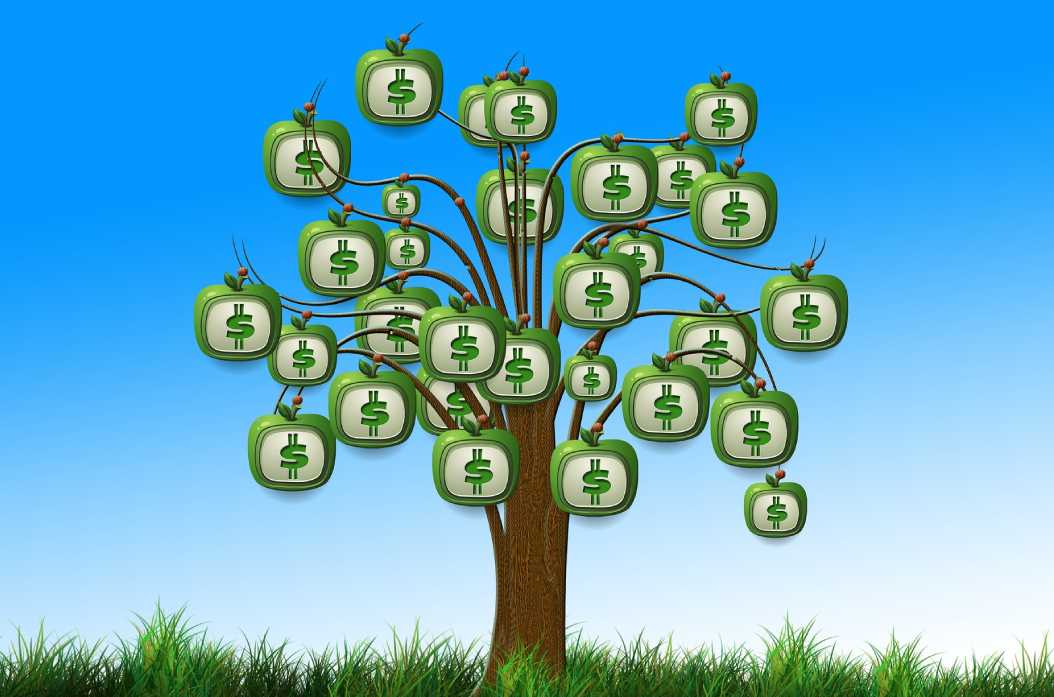“Cash” is the energy that flows through a business giving it life. It’s like the electrical current that flows through a laptop or smart phone. Without the flow of electrical energy, the unit is non-functional. In a business, if cash does not flow in and flow out, the business is non-functional.
When your customers pay you, it puts cash in your bank account. When you pay your suppliers and employees, it puts cash in their bank account. A business cannot meet its financial obligations to suppliers, service providers, employees and tax authorities without cash. If a business tries to delay payment for an extended period it can lead to law suits, tax liens, bankruptcy and dissolution.
That’s why I say that the Number One Rule of Business is Don’t Run Out of Cash!
Where Does Cash Come From?
There are two ways a business can generate cash:
- One is to sell something. This is the best option for any business.
- The other method is to rent money.
Renting Money – Taking out a loan from a bank or other financial institution is what is referred to as “renting money.” The loan process is similar to renting a vehicle. With a vehicle, the rental agreement grants you the right to use the vehicle. However, you must return it at the end of the agreed upon period and pay for the privilege of the usage. In the case of a business loan, what is being rented is money. A bank will provide a certain volume of funds for a specific period of time at a mutually agreed upon interest rate. Those funds may be granted in a lump sum or through a line of credit where funds are repetitively accessed and returned.
In either case, the funds must be returned and the business must pay for the usage of funds. That payment is called “interest.” Businesses frequently rent money to ensure they do not run out of cash. They do this by establishing a line of credit.
There are other times it makes sense to rent money. For example, the purchase of a building or an expensive piece of equipment. Here the appreciation of the property, or the income that can be generated from the equipment, make this rental process an “investment” that can pay great dividends.
What If You Can’t Rent? – Sometimes, however, renting money is not possible. Keeping with the vehicle analogy, there are circumstances that prevent an individual from renting a car.
- If you’re under 25 years of age
- If you do not have a valid driver’s license
- If you do not have a valid credit card
If one or more of these circumstances are present there’s no way you will be able to rent the vehicle. Similarly, there are circumstances that can prevent a business from getting a loan:
- Too short a time in business
- Insufficient cash flow to pay back the loan
- Tax liens
- Bankruptcy
- Poor credit score
Even with such circumstances the business still needs cash. That’s where the other method of bringing in cash can be appropriate.
Sell Something – Selling something is the second method of bringing cash into a business. That “something” can be a product, service, time or expertise. But it can also be many other things: Equity; Intellectual Property Rights; Patent Rights; Franchise Rights; or an Asset (like excess inventory, land, equipment, buildings or Accounts Receivable).
In selling a product, service, time or expertise the ideal situation is to be paid before delivery. Second best is to be paid at the time of delivery. However, in today’s economy, a business is often confronted with needing to grant its customers payment terms. That means you’re selling on credit and your money stays in their bank for some period of time. Typical payment terms used to be Net 30 days. Unfortunately, many companies are now demanding payment terms of Net 60, 90 or more days. Since you can’t spend the cash that’s in someone else’s bank, a business needs to find a way to get access to the money that belongs to them or use someone else’s money. Renting money as noted above is one possible solution.
Another solution is to sell something other than product, service, time or expertise.
Selling Equity – “Equity” is your ownership of your company. It is possible to sell part of that ownership in return for cash. Stock sale and venture capital infusion are forms of equity financing. While this does give you access to cash, it brings with it the need to give up autonomy. You now have other people who will insist on having input into your business practices and activities. Many times, this is exceptionally useful. Especially when those investors bring levels of expertise and/or personal contact that can serve the company.
However, depending on your industry, strategy, personality and track record it may be extremely difficult to sell equity.
Selling Rights – “Licensing” is another way to access cash. If you have a proprietary product or process you may be able to license the rights to that product or process to others in exchange for cash. Most small and medium sized businesses do not have such a proprietary product or process making it difficult to raise cash through this method.
Selling Assets – Assets are things that a company owns: property; equipment; excess inventory; Accounts Receivable; and others. Since you own the asset you have the right to sell it to someone else that is interested in that asset. In so doing you raise cash. Property, equipment and excess inventory are examples of non-renewable assets. By that I mean, they exist in physical form and once they are gone, they’re gone.
Accounts Receivable is a renewable asset. Every time you sell your product and/or service to a customer that is paying over time, you create a new Receivable. As an asset, Accounts Receivable (A/R) can be sold. The process of selling A/R is called “factoring.” When a business factors its A/R it sells the right to payment to a third party for a small discount (typically 2% or 3% of face value).
Companies that buy A/R (factoring companies) look at individual invoices as financial instruments. Financial instruments (such as stocks, bonds, mortgage notes, etc.) can be bought and sold. A business invoice has an issue date, maturity date, description of what it represents (product and/or service sold), face value, issuing party, and obliged party (the company obliged to pay the invoice). Since you own this financial instrument you can sell it. Factoring companies buy those instruments.
As a renewable asset, Accounts Receivable can be used over and over as a source for accessing immediate cash. The primary requirements for being able to raise cash through the sale of A/R are:
- Your customer must be either a business or a government entity
- Your customer must have acceptable commercial credit (a company or city in bankruptcy is not credit worthy)
- You’re A/R must not be pledged to another entity as collateral for some other financial relationship (This could be mitigated by an Intercreditor Agreement.)
- You must not have unresolvable tax liens or judgments against your company
Summary
Access to cash is the single most important thing in a business. There are multiple ways to get the cash necessary to operate. Each method has certain restrictions and ramifications to its use. As a business owner you should examine every option to determine what is or is not available to you now.
_____________________________________________________________________________
Mr. Cox is Managing Principal with Pendleton Capital Group, Inc. – a factoring and trade financing company headquartered in Houston, TX. PCG provides professional “best practices” Factoring and Trade Financing and other small business services. His office is in Houston, TX, and he can be reached for additional information or consultation at adam@pendletoncapitalgroup.com or 713-808-9746. The company’s website can be accessed at www.pendletoncapitalgroup.com





